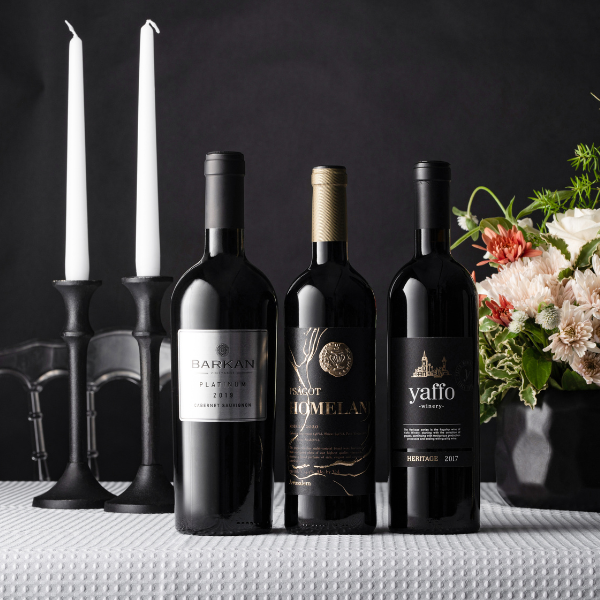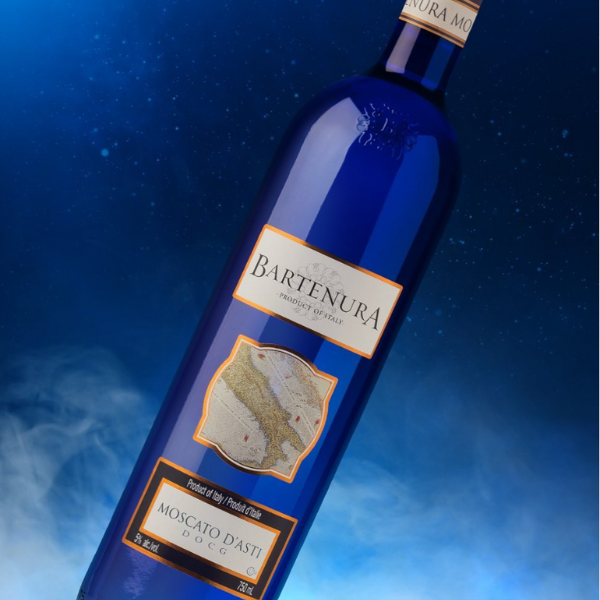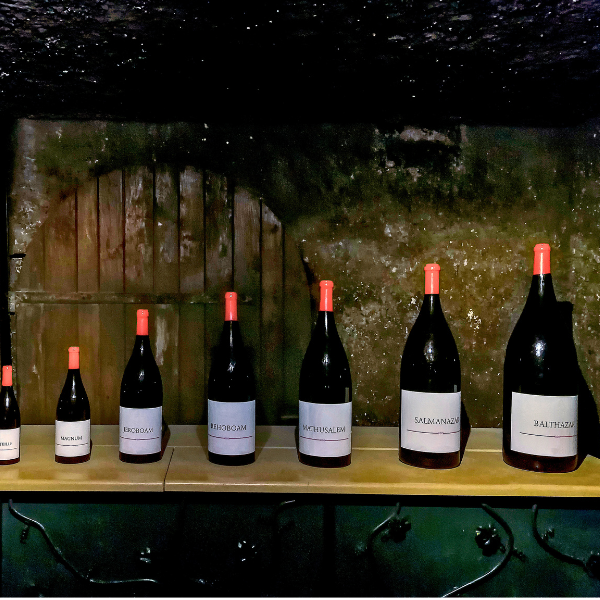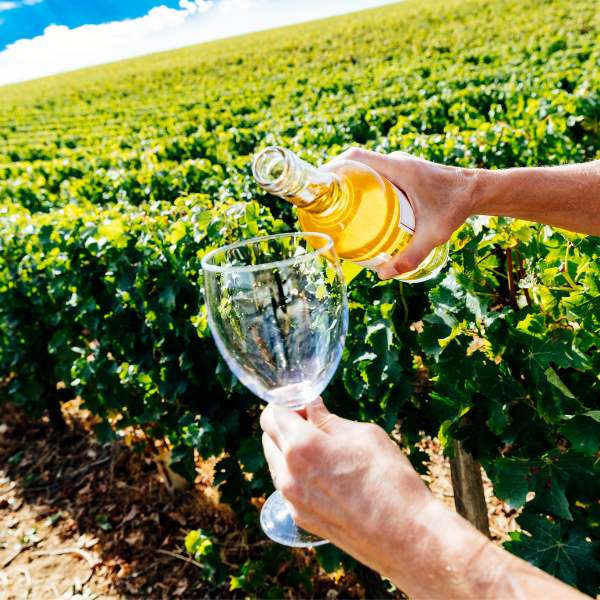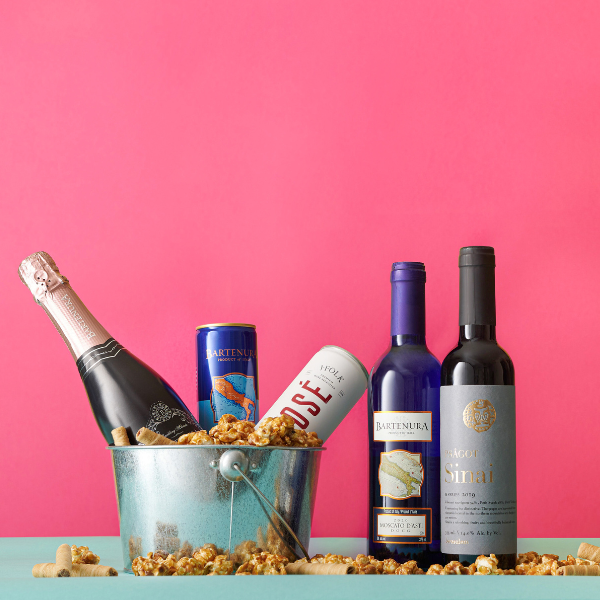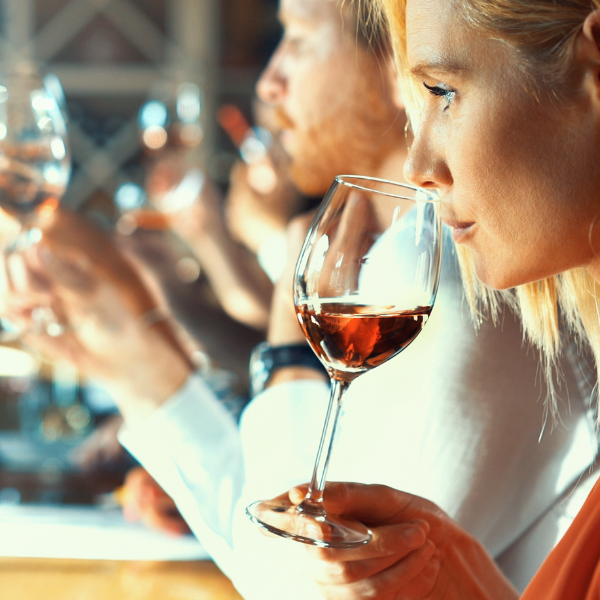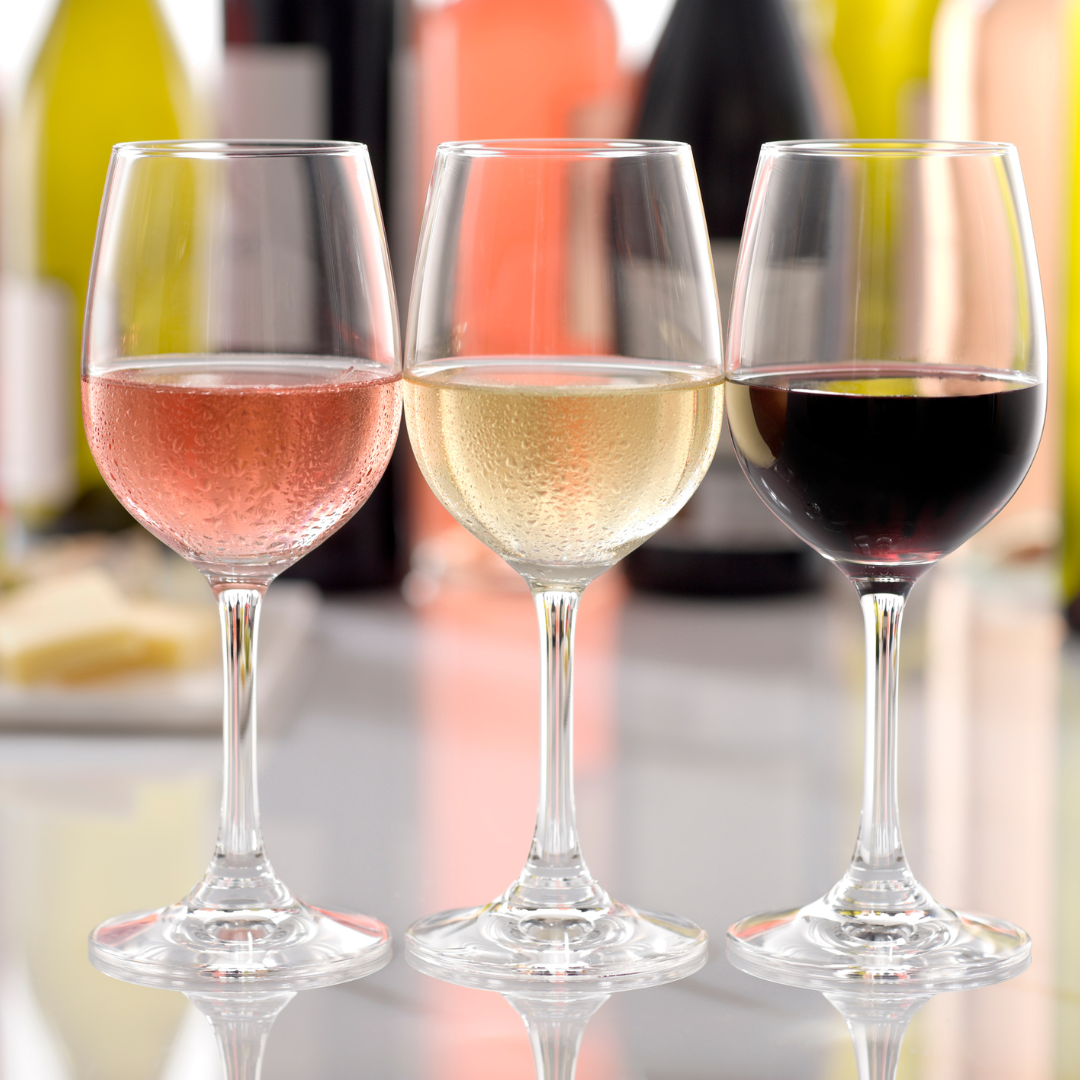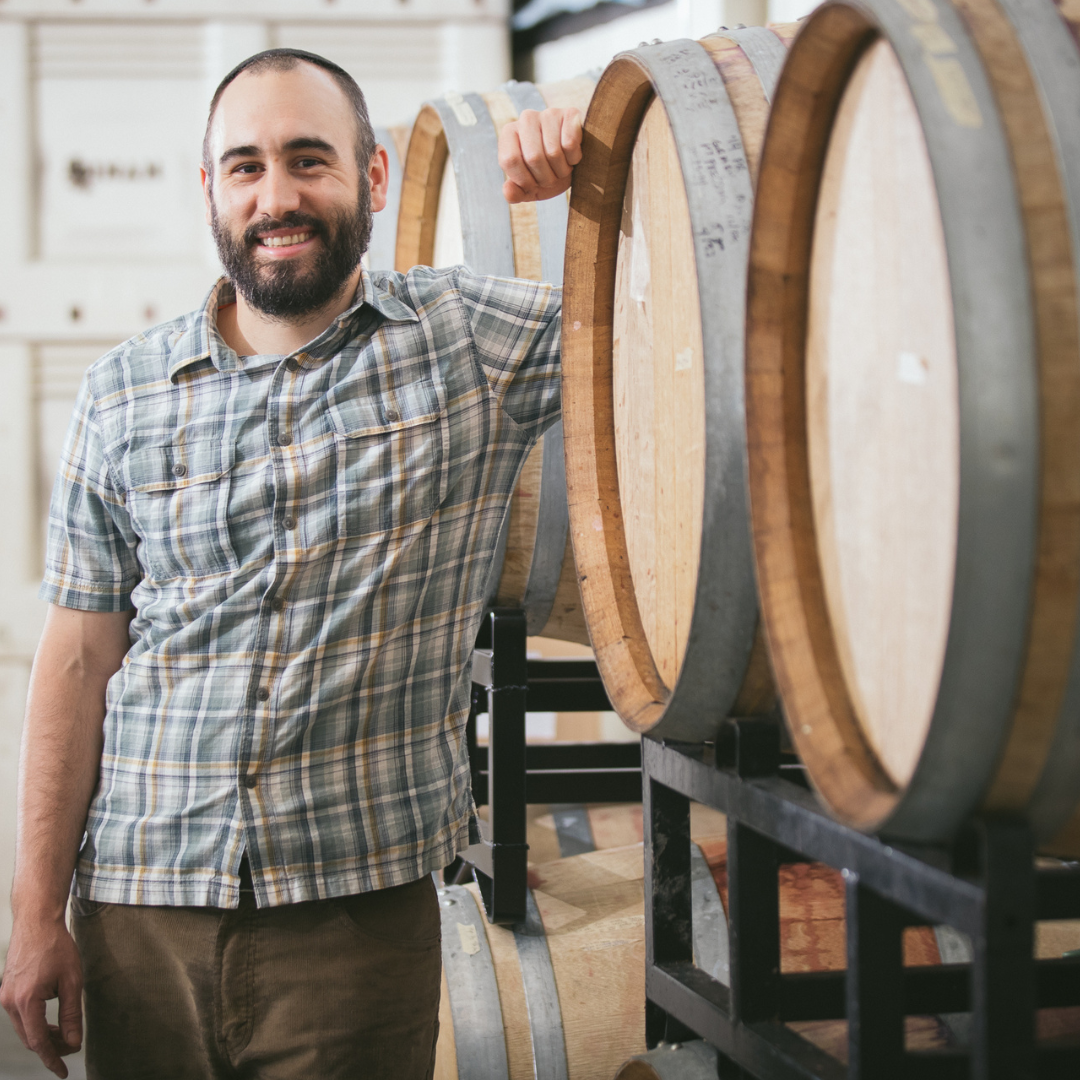The Ultimate Guide To Kosher Champagne & Sparkling Wine
- Dec 21, 2020
By Dr. Kenneth Friedman
Dr. Kenneth Friedman is a Baltimore-based kosher wine concierge and connoisseur. He runs many food and wine tastings, locally and online. He can be found on Instagram @kosher.wine.tastings.
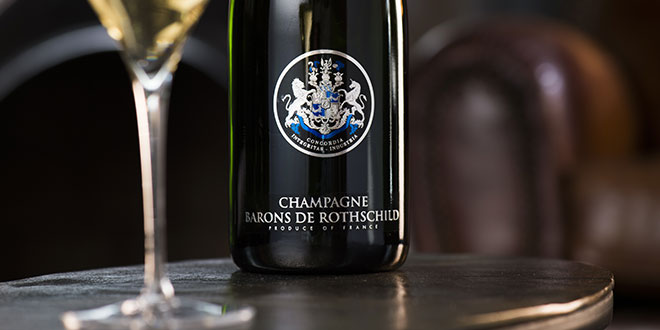

Champagne and all sparkling wine is a topic many find difficult to tackle. With a mysterious air of luxury and seemingly dedicated to only the most celebratory events, “bubbly” wines are often passed over in favor of something more familiar. This is a tragic mistake. So let us educate ourselves and take a deeper dive into this fascinating -- and delicious -- wine.
Here's What We'll Cover:
- 1 - What is Champagne? A Brief Primer
- 2 - Is Champagne Kosher?
- 3 - Champagne Producers
- 4 - Champagne Geography and Terroir
- 5 - Champagne's Unique Production Method
- 6 - Champagne Bottle Details
- 7 - Champagne Bottle Sizes
- 8 - Champagne Classification System
- 9 - Champagne Vintage vs Non-Vintage
- 10 - Blanc de Noirs, Blanc de Blancs, Rosé
- 11 - How to Open Champagne/Sabrage
- 12 - How to Serve Champagne
- 13 - What Glassware Should I Use for Champagne?
- 14 - Pairing Champagne with Food
- 15 - Storing and Aging Champagne
- 16 - Other Sparkling Wine Choices
- a. Cava
- b. Prosecco
- c. Sparkling Wine
- d. Pét Nat
- 17 - The Kosher Champagne Recommendations & Buying Guide
- a. Selecting Champagne, Prosecco, Cava, and Sparkling Wine
- b. For the Champagne Purist
- c. For the Budget-Conscious: Top Bubblies Under $30
- d. Best Champagne and Sparkling Wine to Give as a GIft
- e. Best Brut, Cava, Prosecco, & Sparkling Wines
- f. For the Sweet Sparkling Lover
- 18 - The Champagne Wrap-Up
1. What is Champagne Wine? A Brief Primer
Let’s get one thing out of the way immediately. To be considered Champagne, according to the European Union, the wine must legally be produced in the French Appellation of Origin (AOC) of Champagne. The appellation of Champagne comprises 634 villages in five different divisions: the Aisne, Aube, Haute-Marne, Marne and Seine-et-Marne. Of these 634 villages, only 318 have the legal right to produce the wine called Champagne. Outside this appellation, all other sparkling wine created around the world is not Champagne, but depending on where it is made, called something else. We’ll return to this topic later.
2. Is Champagne Kosher?
The history of kosher Champagne is recent, paralleling the rise of great kosher wine more generally in the past several generations.
According to Gabriel Geller, Director of Education for Royal Wine Importers, the first kosher Champagnes produced were “likely either Pommery or Jeanmaire, sometime in the 1960s.” Geller continues, “This is a crazy fact, because that means that besides a couple of Alsace wines, maybe shortly before or even after, the first quality modern kosher wines in the world were Champagne.”
With the appetite for world-class products continually on the rise in the kosher world, we have seen kosher runs of Champagne from such famous Houses of Champagne as Laurent-Perrier, Louis de Sacy, and Drappier. As with all kosher runs of otherwise non-kosher wineries, the wines are mostly indistinguishable and made in the exact method as their counterparts.
Almost all kosher wine is Kosher for Passover, and that includes kosher Champagne and sparkling wines. Kosher Champagne is still a relatively small genre, though a growing trend with the growth of all kosher premium products. Nowadays, there are indeed answers to “What is the “What is the Best Kosher Champagne?”
3. Champagne Producers
Several Champagne producers, including Drappier and Laurent-Perrier, produce kosher versions of their wines. Other kosher Champagne and sparkling wine producers include Bartenura, Gilgal, Hagafen, Herzog, and Yarden. We invite you to discover these incredible champagne producers, as well as Paul Briard Champagne and Paul Briard Rosé, an exclusive and sensational Champagne only available on KosherWine.com
4. Champagne Geography and Terroir
In the northeast of France lies the historic and fabled region of Champagne. The wet, cool microclimate combined with the chalky soil create the perfect conditions to grow the Pinot Noir, Pinot Meunier, and Chardonnay grapes that create the world-class Champagne known all over the world.
5. Champagne’s Unique Production Method
Champagne is produced from the three varietals of Chardonnay, Pinot Noir, and Pinot Meunier. Champagne’s unique production, giving it its signature carbonation, is legally called méthode champenoise, or the “traditional Champagne method,” which specifies that the secondary fermentation occurs inside the bottle itself. In fact, two fermentations take place, one in the tank and then one in the bottle, which is where the bubbles are created.
Winemakers then take the fermented base wine and blend into a cuvée, followed by adding the liqueur de tirage, or the mixture of wine, active wine yeast, and sugars, to begin the secondary fermentation inside the bottle. The final dryness of the Champagne and the amount of resulting carbonation are dictated by the exact amount of sugar added. This precision is a finely-tuned skill of the winemaker.
At this point, secondary fermentation occurs inside the bottle, the very step that makes Champagne a unique product. Yeasts die in a process known as “autolysis” and the carbonation happily becomes trapped in the bottle. Then wine is “aged on its lees,” for a minimum of 15 months on the autolyzed yeast particles remaining in the bottle. Depending on its style and the particular Champagne House, some Champagne is aged longer.
Near the end of the aging process, bottles need to be “riddled,” or turned with the bottleneck slightly pointed downward so that the yeast sediment byproduct of secondary fermentation be pushed toward the neck and cork, so that upon opening the sediment be expunged with the ejection of some of the carbonation, resulting in a more appealingly-clear final product. You may not know about this actual job, but massive Champagne cellars still might employ a remeur to hand-turn each of the bottles slightly each day. Manual riddling of the bottle can take approximately 4-6 weeks, turned just slightly each day. Nowadays, most producers use an automated process to reduce the time, but not affect the quality.
Next comes disgorgement, whereupon the autolyzed yeast and sediment are removed via placing the neck of the bottle into freezing liquid to solidify the clump of sediment and then popping the cap whereby it is released. Thereupon the bottle is covered quickly, though as you can imagine, some wine is lost in that moment.
In the final step before corking, winemakers then replace that “lost wine” with a liqueur de dosage or liqueur d’expedition, or referred to as “dosage,” where a small amount of sweet liquid is added back to the bottle to balance the final product and replace the missing liquid to even out the bottle. The label will usually indicate the winemaker’s decision in this process as follows:
Champagne Sugar Dosage Terms
- Non-Dosé/Brut Zéro/Brut Natural: no added sugar and less than 3g/L residual sugars.
- Extra Brut: between 0g/L and 6g/L residual sugar.
- Brut: less than 12g/L, and the most common style produced
- Extra Sec/Extra Dry: Between 12 and 17 g/L
- Sec: between 17g/L and 32g/L
- Demi-Sec: between 32G/L and 50g/L
- Doux: more than 50g/L residual sugar
The bottle is finally corked, and you may notice that these bottles have a wire cage attached. Why? So that they don’t explode on their own! They are labeled with often distinctive labels that make them stand out from other types of wine and give the Champagne House the opportunity to emblazon their brand on its bottle.
6. Champagne Bottle Details
When holding a bottle of Champagne, you are cradling a bit of engineering brilliance. As with all bottles used for wine, there is a rhyme and reason to the style and shape. To begin with, Champagne bottles are heavier due to the thicker glass necessary to withstand the internal carbonated pressure. The bottle is shaped like a standard Burgundy bottle, but it is said that the contents of a typical bottle of Champagne exert three times greater the amount of pressure on its container than a car tire.
Champagne bottles exhibit a deeper concavity at the bottom, called the “punt,” for several reasons. The punt helps with the turning, or “riddling” process during initial fermentation, the depth increases the strength of the glass structure, and of course, the deeper punt allows for easy pouring.
A noticeable difference on a Champagne bottle (as a matter of need) lies at the opening in its distinct cork. Any bottle of bubbly must take extra precaution to retain its innards, and the specialized composite mushroom-shaped cork helps provide an airtight seal within the bottle. Additionally, the carbon dioxide released inside the bottle adds to the expansion of the cork, leading to the mushroom shape.
Finally, the wire cage, or muselet, is secured over the top of the cork, to prevent any premature explosions. The muselet, derived from the French word for “muzzle,” contains a metal cap often displaying the emblem of the manufacturer. Here’s a little-known fact for you: It always takes exactly six twists to open the wire muselet. Why? Seems it’s anyone’s guess, and as the modern muselet was invented in the mid-19th century, there may be no one who truly knows the answer, but the most romantic idea was that six is the French number of “intense happiness.”
Topping the entire cork assemblage is a wrapping of foil called the “capsule,” which traditionally was used for pest control, but today is commonplace and a part of the brand’s individualized packaging. All of these intricacies help to make the bottle of Champagne stand proudly apart from other wines.
7. Champagne Bottle Sizes
* Piccolo/Split: 187.5 ml, equivalent of ¼ standard bottle
* Half/Demi: 375 ml, equivalent of ½ standard bottle
* Standard: 750 ml, the most commonly produced wine bottle size
* Magnum: 1.5 L, equivalent of 2 standard bottles
* Double Magnum: 3 L, equivalent of 4 standard bottles
Larger bottles carry Biblical names:
* Jeroboam: 4.5 L, equivalent of 6 standard bottles
* Impériale/Methuselah: 6 L, equivalent of 8 standard bottles
* Salmanazar: 9 L, equivalent of 12 standard bottles
* Balalthazar: 12 L, equivalent of 16 standard bottles
* Nebuchadnezzar: 15 L, equivalent of 20 standard bottles
* Solomon: 18 L, equivalent of 24 standard bottles
* Melchizedec/Midas: 30 L, equivalent of 40 standard bottles
8. Champagne Classification System
Following the Champagne riots of 1910 and 1911, the French government worked to create the designated Appellation d'Origine Contrôlée, or geographical region in which grapes grown could be called Champagne. To establish a fair buying system from the underrepresented grape growers vs. the powerful Champagne houses, a classification system was organized to set prices called the Échelle des Crus or "ladder of growth,” based on multiple natural characteristics of each village such as sun, soil, and microclimate. This system is distinct from those used in Burgundy and Bordeaux, which classify estates singularly, and not more generally by village.
The Échelle des Crus system is set on a 100-point system with these ratings being used to set graper pricing. Grand Cru villages scored at 100 would receive 100% of the price, while Premier Crus, one tier lower, would receive their percentage between 90 and 99, as scored, with the remaining villages scored between 80 and 89. Today, there are 17 Grand Cru villages, but as almost all Champagne is blended with grapes from a variety of vineyards, and of different vintages the Grand Cru classification is controversial, and may not be as important as it seems.
9. Why Doesn’t My Champagne Have a Vintage on it?
* Non-Vintage, Vintage, Cuvée Prestige:
To achieve a consistent “house style,” many Champagne houses will blend grapes from different vintages and from different crus and varietals. This wine is listed as NV or non-vintage, and will never have a year listed on the bottle.
Some Champagne is produced from grapes harvested in the same vintage, or a single millésime, particularly in an exceptional vintage. Millésime must be aged for a minimum of three years in the bottle, unlike non-vintage Champagne which is aged for 15 months.
Cuvée Prestige or Tête de Cuvée is the “best of the best” Champagne, carrying a price tag to match. They have aged a minimum of 5 years pre-disgorgement, and often longer.
10. Blanc de Noirs, Blanc de Blancs, Rosé
Blanc de Blancs, meaning “White of Whites,” is a Champagne made only of white grapes, and in the case of Champagne, this means exclusively of Chardonnay.
Blanc de Noirs, meaning “White of Darks,” is a Champagne made only from red grapes, and in the case of Champagne, this means either made of 100 percent Pinot Noir, 100 percent Pinot Meunier, or a blend of Pinot Noir and Pinot Meunier. Though the grapes are red, note that they are called Blanc de Noirs, and thus, the resulting wine is white..
Rosé Champagne is a beautiful-in-the-glass, salmon-colored Champagne that both looks and drinks delightfully, and continues to increase in popularity. You will find more fruit and body in a glass of rosé Champagne than in traditional Champagne. There are two methods of production, rosé d’assemblage or blended Champagne, and rosé de saignée or macerated Champagne. Most rosé Champagne is made via the former, by blending a small percentage (about 15%) of red still wine from Pinot Noir and/or Pinot Meunier into the sparkling white Champagne. The saignée method is more typically used with still rosé production but is sometimes used to produce lovely rosé Champagne. One such example is the wonderful Drappier Brut Rosé Champagne, made from 100% Pinot Noir.
11. How to Open Champagne - Sabrage
Part of the fun of a bottle of Champagne is the uncorking, and popping a Champagne cork is quite the head-turner even in a large crowd, particularly when the saber method is used. This method is traced back to Napoleonic times when victorious soldiers would open Champagne bottles, on horseback, with - you guessed it - their saber. In other words, do not try this at home. Sabring a bottle in modern times entails using a blunt-edged tool which is sturdy and made of metal.
It is important to chill the bottle down properly, and remove the foil paper and muselet, or metal cage on top. Point the bottle upwards at a 45-degree angle, and run the saber across the back seam of the bottle. Certainly make sure you are not pointing towards any of your loved ones, as the cork will hit upwards of 50 MPH upon release.
Otherwise, your hands work as a perfectly traditional tool to open your Champagne. And Champagne has the added advantage of not requiring a corkscrew. Remove the cage, and begin to extract the cork while keeping some pressure on it and turning the bottle, not the cork, so that you don’t accidentally break the cork (and ruin all the fun).
12. How to Serve Champagne
Champagne is best chilled to approximately 42-48 degrees fahrenheit, and once in the glass will warm to the perfect 46-55 degrees Fahrenheit temperature for drinking. The preferred method for chilling is to use an ice bucket filled with ice water and submerge the bottle for about 1-2 hours.
Dry the bottle upon removing it from the ice water and make sure to pour with the label visible to your guest. The more typical alternative is a basic refrigerator. Lay sparkling wine on its side and allow to cool for approximately 3 hours before serving. It’s a good idea to leave a bottle at all times in the fridge so one is ready to pop at your leisure.
13. What glassware should I use for Champagne?
Make sure whichever glassware you use is clean with no detergent remnant. As for the eternal difficulty of choosing the perfect glass, it is often thought Champagne and all sparkling wine must be served in flutes, the long, narrow glassware saved just for this occasion. Flutes were designed by the hospitality industry as the narrow flute holds bubbles longer for receptions, and can be stacked aplenty on trays. But flutes don’t allow for proper aroma in the glass. By all means, if you own a nice set of flutes, use and enjoy them. But don’t feel constrained to this style.
Experts feel the flute is best used for less expensive sparkling wine, to hide flaws. Most certainly don’t use the short, wide-mouthed coupe glass, as bubbles will dissipate quickly. The perfect glass has a wide inside and narrow mouth, and new Champagne glasses are designed in this style, but your white wine glass is similar in style and would work best for your favorite bubbly.
14. Choosing Champagne to Pair with Food
Most people unfortunately still only consider a glass of Champagne or other sparkling wines on New Year’s or as part of a celebratory affair. But bubbly is perhaps the most versatile of wines, complementing a wide array of foods and courses, and all types of situations.
Champagne and sparkling wine come in many styles and with the perfect balance of bubbles, fruit, dryness, and acid, will pair with just about anything. For your “Best Champagne Pairings” you can experiment with heavy dishes such as steaks and fried chicken, lighter fare such as fish and poultry, all kinds of appetizers, or with dessert. And we all know a glass of Champagne works perfectly on its own.
15. Storing and Aging Champagne
Great Champagne can be aged for many years, though it is ready to drink when released, and many Champagnes will not improve with aging. An interesting fact is that unlike still wine, Champagne and other sparkling wines may be stored upright, as the CO2 pressure keeps the cork moist. Additionally, upright storage reduces the possibility of cork taint. Still, there are varying thoughts in this debate, but in the short term, upright storage is certainly fine. For long-term storage, your best bet is to store your bottles on their side in a cool environment (50 - 54 degrees Fahrenheit), with dark conditions (to avoid what is called "goût de lumière," or “the taste of light,” as UV light is known to damage Champagne), and with moderate humidity.
An inexpensive solution is your basement, and when that is not possible, a wine refrigerator. Most importantly, perhaps, is that your storage space should not have wild fluctuations in temperature. In general with wine, large format bottles such as Magnums and larger can be stored for longer periods since the surface area of wine affected by air is far lower. As with all wine, the provenance of your wine seller is of great importance, so stick with a trustworthy seller such as KosherWine.com.
16. Other Sparkling Wine Choices
As discussed earlier, the most notable and famous difference between Champagne and all other sparkling wine is that to be called Champagne, the wine must be produced in the Champagne region of northern France. All other sparkling wine, even that made elsewhere in France, can not be called Champagne according to laws of the European Union, which protects this designation, as well as the term méthode champenoise, the term for the method in which Champagne is produced. Although some other sparkling wines are produced this way, they are said to be made in the “traditional method,” and not in the méthode champenoise.
Additionally, Champagne is only made from one of three varietals: Chardonnay, Pinot Noir, or Pinot Meunier. Prosecco is Italian and made from the Glera grape, and Cava is Spanish, and made from a blend of Macabeo, Parellade, and Xarel-lo grapes.
Cava
Cava, Spain’s iconic sparkler, is traditionally made from three varietals: Macabeo, Parellada, and Xarel-lo. Most cava is made in the Catalonia municipality of Sant Sadurní d'Anoia and the name cava is from the Catalonian word for cellar. Cava is produced using the same method as Champagne, but because only winemakers in Champagne may label their wines as made with méthode champenoise, cava is labeled as being made in the “traditional method,” or méthode traditionnelle. Cava has less pressure typically than Champagne, displaying about 4 atmospheric pressures to Champagnes six. Cava is likely about half the price or less of Champagne, but made in the same method with secondary fermentation occurring in the bottle, which will give more of the yeasty taste which those who love Champagne crave
Best Kosher Cava:
Freixenet Excelencia Brut Cava
Prosecco
Prosecco is a great wine to explore if you are seeking sparkling wine on a budget. Prosecco hails primarily from Veneto, in northern Italy, and is made predominantly from the Glera grape. The region’s warm and temperate microclimate make it the ideal region to grow Glera, and produce Prosecco. Differing from Champagne, which is created using méthode champenoise (link to section discussing this), Prosecco uses the Charmat Method, or the tank method, whereby the secondary fermentation occurs in a tank, and not in the bottle. This is a cheaper alternative to bottle fermentation, and also lends a far different taste to the final product, as Champagne’s long “sur lie” process of interacting with the Champagne yeasts lead to notes of toast, brioche, and bread, while Prosecco’s Charmat Method lends itself to more Glera fruit flavors such as pear, apple, honeysuckle, cream, and floral notes. Because Prosecco is fermented in a tank, there is less pressure in the wine, and the bubbles are lighter and less frothy, with lower persistence. More scientifically, Prosecco has about 3.5 times atmospheric pressure in a bottle, which on its own means nothing to most of us, but for this exercise can be related to the 6 times atmospheric pressure in a bottle of Champagne, which also explains the need for the thicker bottle used for Champagne. Prosecco is classified, in order of driest to sweetest, as Brut, Extra Dry, and Dry.
Contessa Annalisa Collection Prosecco
Sparkling Wine
“All Champagne is sparkling wine, but not all sparkling wine is Champagne.” We know that to be called Champagne, it must hail from Champagne, France. Other regions in the world have their own names for the bubbly they produce. In America and most elsewhere, sparkling wines are called just that. And while even American sparkling wine can employ the traditional method or méthode champenoise, it is still called sparkling wine.
Yarden Blanc de Blanc Late Disgorged
Hagafen Brut Cuvée Sparkling Wine
Hagafen Brut Rosé Sparkling Wine
Herzog Selection Blanc de Blancs Brut Champagne
Pét Nat
Pét Nat, or pétillant naturel, has surged in popularity in recent years, and several kosher versions can be found here. During fermentation, wine yeasts eat sugar, resulting in carbonation and alcohol. All wine undergoes this process but are bottled after undergoing this process, leaving no trapped carbonation. Champagne uses a secondary fermentation within the bottle itself whereby added yeasts and sugars create the bubbly carbon dioxide we all love in Champagne. With Pét Nat, the wine is bottled while it is still within its first round of fermentation, trapping the resulting carbon dioxide byproduct.
Pét Nat, unlike Champagne which is only made from three grape varietals, can be made from any varietal, and winemakers are having fun experimenting. Pét Nat is meant to be drunk upon release and offers something unpredictable and interesting to consider.
17. The Kosher Champagne Buying Guide
When selecting Champagne, Prosecco, Cava, and Sparkling wine, there are plenty of choices to meet your taste and budget. A good tip is to try one from each category to narrow down your likes, or to keep one of each depending on the event, the food, or just to enjoy a wine like no other. Here are some recommendations to help you pick out the perfect wine.
For the Champagne Purist:
For those of us who only want the best, and the “real deal,” we are blessed to live in an age where those who keep kosher can access world-class Champagne, indistinguishable from its non-kosher counterpart. Nothing in the kosher process changes the production method and some of the greatest Champagne Houses now proudly produce kosher. Here are some of the Best Champagnes in the World -- which just happen to be kosher:
Drappier Brut Champagne Carte d'Or
Laurent Perrier Rosé Champagne
Drappier Brut Champagne Nature
For the Budget-Conscious: Top Bubblies Under $30:
Wonderful bubblies don’t need to have the price tag normally associated with Champagne. Sparkling wines from around the world made in different methods allow us to have the fun, fruity bubbles without the accompanying price tag. Here are some of the Best Under $30:
Baron Herzog Brut American Champagne
Herzog Selection Rosé Brut Champagne
Best Champagne and Sparkling Wine to Give as a Gift:
Champagne is really the perfect gift, as it connotes taste and luxury, and best of all, it’s already wrapped beautifully. Here are the best Champagnes to wow your most-discerning giftees:
Yarden Blanc de Blanc Disgorged
Barons de Rothschild Brut Champagne Rosé with Gift Box
Barons de Rothschild Brut Champagne
Barons de Rothschild Brut Champagne with Gift Box
Best Brut/Cava/Proseccos/Sparkling Wines:
Outside Champagne, France, many world-class sparkling wines are produced, some mimicking the process used to make Champagne, and others made in a more economical fashion, with the resulting wine being a fraction of the price, while providing a fun, fruity sparkler.
Freixenet Excelencia Brut Cava
&nbs
 Get help from an expert like Brad
Get help from an expert like Brad


